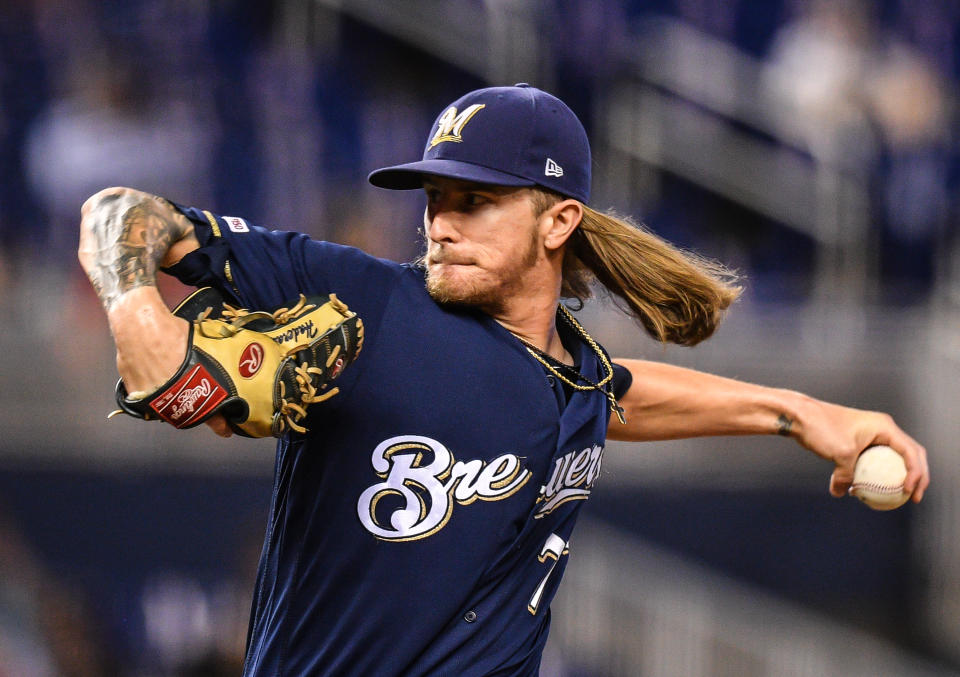Can you punt these fantasy categories in this shortened MLB season?
Punting categories is a far better idea than many fantasy writers are willing to acknowledge. For those who are unfamiliar with punting, this strategy involves paying no attention to a specific category and accepting that you will likely finish last in that area. The benefit of punting is that your resources are streamlined, which allows you to finish atop the standings in other categories.
[Still time to join or create a fantasy baseball league for the short season]
In this article, I’m going to rank the best categories to punt in a typical season and whether or not the same strategy can be applied to the shortened 2020 campaign.
Saves
The saves category is by far the cleanest one to punt. In fact, I have often punted saves in experts leagues and have never finished out of the money when using this strategy. The key to punting saves is to stay fully out of the closer market from the moment your draft starts. This allows the manager to spend extra resources on hitting while still building a strong starting rotation. To be clear, punting saves does not mean avoiding relievers. In fact, the best plan is to still regularly use multiple relievers. But you’re now free to choose relievers who best combine plenty of strikeouts with low ratios, and these relief arms are readily available in the late rounds of drafts or on the waiver wire.
Some of the best late-round relievers for a save-punting plan this season include Drew Pomeranz, Emilio Pagan, Matt Barnes, Seth Lugo, and Chad Green. All of these relievers can match the strikeout totals and ratios of top closers, at a fraction of the cost. And a team with no closers could potentially double-tap their aces (for example, Mike Clevinger and Shane Bieber) while still building a strong hitting lineup. A side benefit of punting saves is that sometimes you’ll stumble upon a quality reliever who works his way into a closer’s role. At that point, you can trade the player for a profit or try to grab a couple of points in the saves standings.

Batting Average
Punting batting average is not a plan I would recommend in most seasons, but it may be a solid option in 2020. I usually want to compete in batting average, as a team with a strong average should collect plenty of runs and RBI. But batting averages tend to fluctuate during short time frames, meaning that a fantasy manager could punt batting average this season and accidentally pick up a couple of points in the category.
[Positional Rankings: C | 1B | 2B | SS | 3B | OF | SP | RP]
Managers could also consider a partial punt of batting average this year by continually drafting the lowest expected average from the next 5-10 hitting options on their list. This would be a way of loading up on counting stats while still not totally giving up on batting average. Some players who fit this strategy include Adalberto Mondesi, Gary Sanchez, Joey Gallo, and Max Muncy.
Stolen Bases
Fantasy managers can steer clear of the steals category on draft day without ruling out many players, as there are relatively few men who deliver impactful totals of swipes these days. And with so many sluggers available throughout the draft, those who punt steals can construct an entire roster of players who possess plus power and have traditionally hit for a solid batting average. This category is also arguably more appealing to punt than usual this season, as there is considerable concern that managers will look to minimize injury risk by quieting their stars on the basepaths. Although I have never considered punting this category in the past, I can see the strategy working well this year.
ERA
Like batting average, ERA is likely to fluctuate heavily this season. The stat tends to move substantially from one start to the next, as a single poor inning can damage a pitcher’s ERA more than his WHIP. Additionally, pitchers are often at the mercy of their bullpen to finish off innings and preserve their ERA, which isn’t the case with their WHIP.
However, punting ERA without punting WHIP is a delicate situation. To do so successfully, a manager will need to find a handful of hurlers who compile plenty of whiffs and a low WHIP while not having as much success with their ERA. Typically, these starters will be ones who struggle to prevent homers, such as Matt Boyd and Andrew Heaney.
The rest
In general, I’m not a fan of punting any of the other categories. There used to be a way to punt home runs, but the power shift in baseball has led to long balls being too closely tied to runs scored and RBI. On the pitching side, strikeout and WHIP are generally the categories that fantasy managers should steer into on draft day. I can see a rationale for punting wins, as the stat will be exceptionally hard to predict this year. But punting wins generally means using fewer starters, which would lead to a low strikeouts score, and punting two categories is not a good idea.


